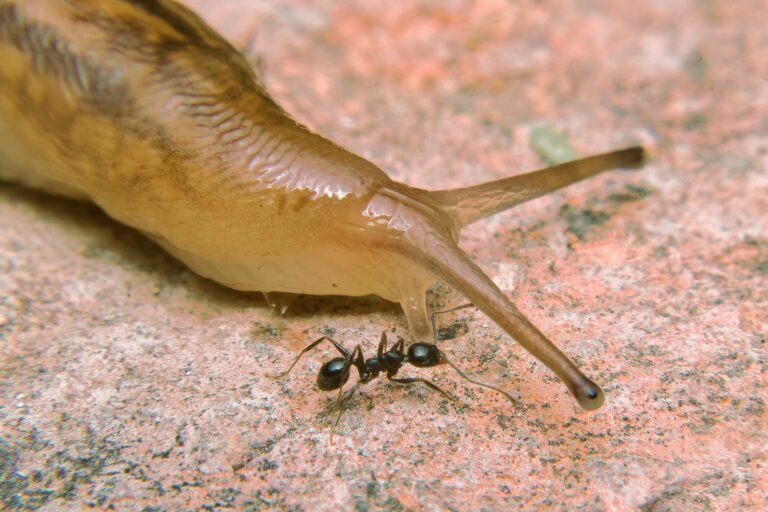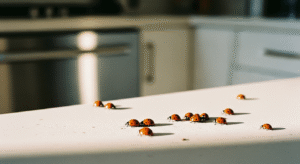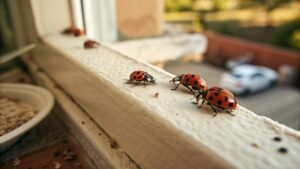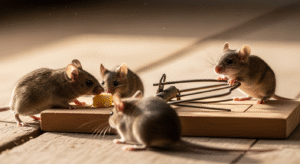Ants are remarkable insects that form complex symbiotic relationships with a variety of organisms. Their cooperation, communication skills, and ecological roles are essential for maintaining healthy ecosystems. Moreover, appropriate ant control measures and complementary services are increasingly recognized as key components in managing pest populations while preserving biodiversity. This article explores the bonds ants form with other insects and organisms, the benefits these relationships offer, and the challenges they face. Homeowners and business owners in the Atlanta, GA metro area can gain insight into why ants are critical to urban ecosystems.
Understand the Importance of Ants in Ecosystems for Insects
Ants significantly improve soil structure and nutrient cycling. Their excavation introduces oxygen and moves organic material, which increases water permeability and aids organic decomposition. They also contribute indirectly to plant pollination by transferring pollen as they move among blossoms, supporting robust plant growth and biodiversity in both urban and rural settings. Moreover, by preying on harmful insectspecies, ants act as natural pest controllers, reducing populations of aphids, termites, and other detrimental insects without synthetic chemicals.
Identify the Role of Ants in Soil Health and Nutrient Cycling
By creating extensive underground nests, ants increase soil porosity and stimulate microbial activity, speeding up organic decomposition. This turnover distributes nutrients evenly, improving soil texture and helping plants develop strong root systems in both residential landscapes and commercial green spaces.
Explore How Ants Contribute to Plant Pollination and Reproduction
Although not primary pollinators like bees, ants inadvertently carry pollen between flowers as they forage. This incidental pollination, especially in low-wind or shaded environments, supports plant biodiversity. Additionally, ants help disperse small seeds through myrmecochory, where seeds with nutrient-rich appendages are carried to nutrient-rich nest sites and later discarded to promote germination.
Analyze the Effects of Ants on Pest Control in Gardens
Ants naturally control pest populations by preying on soft-bodied insects such as aphids, mealybugs, and scale insects. Their predatory habits reduce the need for chemical pesticides, making them valuable for environmentally friendly pest management. Some ant species even secrete formic acid, which can impede fungal diseases, reinforcing their role in maintaining healthy ecosystems.
Recognize Mutualistic Relationships Between Ants and Insects
Mutualistic interactions are a cornerstone of many ecological networks. A classic example is the relationship between ants and aphids, where aphids provide a sugary secretion called honeydew in exchange for protection against predators. Such mutualism has evolved over millennia and enhances the survival of both species.
Examine the Partnership Between Ants and Aphids for Honeydew
Aphids excrete honeydew, a carbohydrate-rich substance that serves as a consistent energy source for ants. In return, ants protect aphids from predators like ladybugs and lacewings, ensuring a steady supply of honeydew and supporting the natural regulation of insect communities.
Discuss Mutualistic Behavior Between Ants and Caterpillars
Certain caterpillars produce secretions rich in sugars and amino acids, attracting ants. In a mutualistic exchange, ants protect caterpillars from parasitoids and predators, while caterpillars secure additional nutrition. This balance of defense for sustenance demonstrates a nuanced coevolution that enhances the survival of both parties.
Investigate How Ants Protect Other Insects in Exchange for Resources
Beyond aphids and caterpillars, ants safeguard other insects that offer nutritional rewards. For example, some butterfly larvae secrete nutrient droplets which prompt ants to guard them. This protection increases survival rates and enriches local biodiversity through coevolution and finely tuned chemical signals.
Discover How Ants Farm Fungi in Symbiotic Relationships
A striking example of ant symbiosis is fungus farming, notably by leafcutter ants. These ants meticulously cultivate fungal gardens within their nests. They process fresh leaf material into a substrate that supports fungal growth, and in return, the fungus supplies essential nutrients, particularly lipids, carbohydrates, and proteins, which sustain the ant colony.
Outline the Process of Ant-Fungus Farming in Ant Colonies
Fungus farming begins when ants collect and chew leaves to create a substrate for the fungus. They inoculate this material with a piece of fungus from the parent colony. As the fungus colonizes the substrate, it forms a network that produces nutrient-rich structures called gongylidia, which ants harvest for food. The careful removal of contaminants ensures the long-term productivity of these fungal gardens.
Study the Nutritional Benefits of Fungi to Ant Colonies
The cultivated fungi provide critical nutrition. Gongylidia offer a concentrated source of nutrients that the ants cannot obtain directly from the plant material. This system allows ant colonies to thrive and supports millions of individuals, demonstrating the efficiency of mutualistic relationships in converting otherwise indigestible resources into usable nutrition.
Consider the Ecological Balance Maintained Through This Partnership
Fungal gardens contribute to broader ecosystem stability by accelerating plant matter decomposition and redistributing essential nutrients back into the soil. This process fosters plant growth, enhances habitat resilience, and helps regulate microbial competition within the nest, reducing pathogen prevalence and sustaining ecological balance.
Identify the Challenges in Ant-Insect Symbiotic Interactions
Ant-insect symbioses face threats from habitat loss due to urbanization, agricultural expansion, and climate change. As landscapes fragment, these delicate mutualistic interactions are disrupted, leading to reduced biodiversity. Recognizing these challenges is vital for conservation strategies designed to protect integral insect communities.
Assess the Impact of Habitat Loss on Ant Populations
Urban development and deforestation limit nesting sites and food sources, isolating ant colonies and diminishing genetic diversity. Even a modest reduction in natural habitat can significantly lower ant abundance and diversity, highlighting the need for habitat preservation in urban pest control strategies.
Evaluate Threats From Invasive Species to Native Symbiotic Insects
Invasive species, such as non-native ants, can outcompete indigenous species for resources, collapsing established mutualisms. These invasive ants may disrupt chemical signaling and displace beneficial insects, emphasizing the importance of managing invasions to maintain native ecological networks.
Review Research on Climate Change Effects on Ant Behaviors
Climate change affects ant behavior by altering temperature and moisture levels. Increased temperatures can boost foraging activity but also induce heat stress, while changes in precipitation affect nest moisture and the consistency of symbiotic interactions. Such shifts may destabilize mutualistic bonds that are crucial for ecosystem productivity.
Learn About Ant Communication in Symbiotic Relationships
Effective communication is crucial for sustaining ant symbioses. Ants use complex chemical signaling—including pheromone trails and substrate vibrations—to coordinate interactions with both nestmates and mutualistic partners. This intricate communication system underlies the efficiency and resilience of their social structures.
Explore Pheromone Trails and Signals Used by Ants
Pheromone trails help ants relay information such as food location and nest relocation. In mutualistic relationships, specific pheromones initiate protective responses during interactions with aphids or other partners, ensuring prompt and precise communication.
Understand the Role of Vibrations in Ant Interactions
Substrate-borne vibrations add another layer to communication among ants. These signals can indicate alarms, recruitment needs, or mating cues, and are particularly effective in crowded conditions, reinforcing the collective defense and coordination within the colony.
Identify Chemical Cues That Guide Mutualistic Activities
Chemical cues found on the surfaces of aphids or caterpillars trigger protective behaviors in ants. These biochemical signals ensure that ants accurately identify beneficial partners versus potential threats, maintaining the mutualistic balance essential for colony survival and ecosystem health.
Investigate the Future of Ant-Insect Symbiotic Research
Ongoing research is shedding light on how ant-insect symbioses function and respond to environmental changes. Advanced studies using genomics, microscopy, and ecological experiments offer deeper insights into these relationships and inform strategies for urban pest control and conservation.
Highlight Recent Findings in Ant-Insect Symbiosis Studies
Recent molecular studies have identified new pheromone compounds that regulate interactions between ants and sap-sucking insects. Field research shows that improved habitat connectivity can enhance the resilience of mutualistic networks, contributing to better pest control and conservation policies.
Consider the Implications of Climate Shifts on Insect Partnerships
Climate change may shift the balance of ant-insect partnerships. Some ant species could adapt their foraging or nesting behaviors, though such changes might weaken established mutualisms. Ongoing research is critical to predict and mitigate adverse impacts on these ecological relationships.
Encourage Public Awareness of the Importance of Ants to Ecosystems
Educating the public about ant ecology is essential for conservation. Outreach programs that emphasize the role of ants in pest control, soil fertility, and symbiosis can support environmentally friendly practices and promote the preservation of urban and natural ecosystems.
Frequently Asked Questions
Q: How do ants improve soilhealth? A: Ants create tunnels that increase soil aeration and nutrient cycling, leading to healthier, more productive soil.
Q: What mutualisticpartners do ants work with most often? A: Ants typically partner with aphids, caterpillars, and fungi, exchanging protection for nutritional resources like honeydew.
Q: How does ant communication benefit their symbiotic relationships? A: Through pheromones and vibrations, ants coordinate mutualistic activities and efficiently exchange resources while defending their colony.
Q: What challenges are impacting ant-insectmutualisms today? A: Habitat loss, invasive species, and climate change disrupt established mutualisms, reducing biodiversity and ecosystem stability.
Q: How can public awareness help protect ant symbiosis? A: Increasing community knowledge about the ecological functions of ants can promote better conservation practices and support for sustainable, environmentally friendly pest management.
The Vital Role of Ants in Maintaining Ecological Balances
Ants serve as a linchpin in their ecosystems, forging intricate symbiotic bonds that enhance biodiversity and stabilize ecological communities. Their roles in nutrient cycling, plant pollination, pest control, and fungus farming underscore the complexity of nature’s web. Despite challenges from urbanization and climate shifts, maintaining and understanding these relationships is key to sustainable pest management and conservation. Building public awareness about the critical functions of ants can inspire innovative strategies that benefit both natural ecosystems and urban environments.




